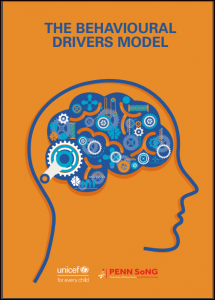The Behavioural Drivers Model
The Behavioral Drivers Model was developed to contribute to change the way people understand Social and Behavior Change and invest resources, and to renew the push for evidence-based programming as our guarantee of the highest standards of practice.
In this document, the authors try to make the explanation of complex phenomena more accessible, and systematically link every conceptual element to an approach that can influence it. They provide clear ‘’how-to’’ support for selecting relevant interventions.
It offers a common reference and language for the study and practice of social and behavior change (SBC), and can be used as a basis to conduct participatory situational assessments, design and operationalize strategies and programs, monitor the extent to which interventions are being implemented, and evaluate effectiveness and changes in behavioral and social outcomes. It is part of a larger effort to promote evidence-based programming and guarantee the highest standards of SBC practice as a means to attain sustainability and impact in the protection and promotion of children’s and women´s rights.
The document begins by presenting the goals and core ideas of the framework; then explores how this conceptual framework ties together theories of change through the Behavioural Drivers Model; and concludes by explaining how the model can guide operationalization through program design, selection of field interventions, and measurement.
This model also informs a set of research and programming tools recently developed and used by UNICEF, including Everybody wants to belong: Practical guide to tackling and leveraging social norms in behavior change programming and Measuring Social and Behavioural Drivers – Guidance Tool.
Last modified: September 30, 2021
Language: English

